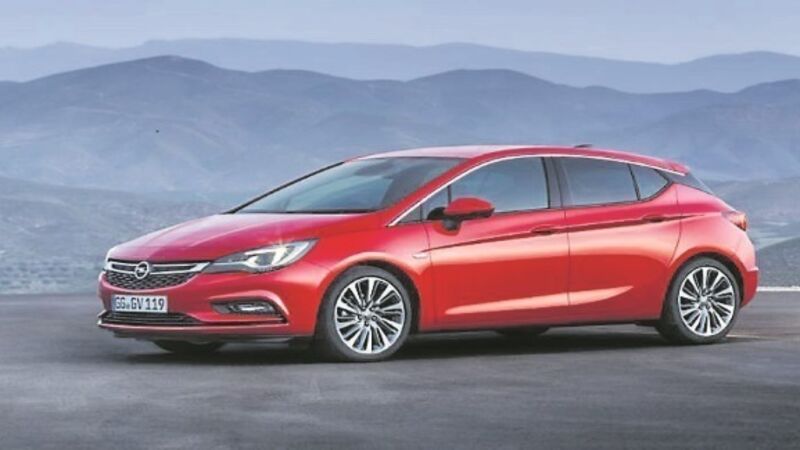New sharp-looking Astra could be a game-changer for Opel in Europe

That evidence comes in the shape of the 11th generation of the Astra which will make its’ world debut at the Frankfurt Motor Show in September and go on sale here the following month.
A much sharper looker than any of its’ immediate predecessors and boasting a new platform and drivetrains, the new Astra will need to build on the solid foundations laid by the new Corsa and Adam models which have re-booted Opel’s fortunes across Europe.
According to Opel Ireland MD, Dave Sheeran, some 24 million Kadett and Astra models have been sold across the globe and he is hopeful that number will be significantly boosted by a new car which, he says, offers some of the latest technologies which will increase comfort and safety for passengers.
While the new car is actually a tad smaller than the car it replaces — going against the grain somewhat, the chassis is nevertheless said to be lighter, more frugal and agile and at the same time even more comfortable.
Importantly too, when it comes on stream here, Astra will be powered by three new engine families (incorporating 13 individual petrol and diesel engines).
Opel says the Monza Concept was the basis for the new Astra and maintains that every element and design feature of that design study makes this a challenger.
With a reduction of up to 200kgs, the new vehicle architecture plays a major role in the weight reduction. All the usual stuff of weight management was endorsed and thus the body shell weight was reduced by 20% from 357kg to 280kg.
Additional, chassis-related measures resulted in another 50 kg of weight reduction and these included the utilisation of high-strength and ultra-high-strength low-weight steels, compact sub frames as well as weight reductions to the front and rear axle.

The combination of these moves, Opel promise, will make the new Astra more fun to drive than ever before. The company will need to make good on this promise because competition from such as the Ford Focus and VW Golf, to name just two, will kill the Astra at birth if it is not some sort of a match for the behemoths of the small family car segment.
Justifiably, Opel is very proud of its’ new engine line up for this car — which will be seen in saloon, hatchback and estate formats and the company says “under the hood of every new Astra a new member of the new engine portfolio can be found where outputs range from 95hp to 200hp.”
The European arm of General Motors tells us that the highlight in the Astra engine portfolio is the all-new 1.4 ECOTEC Direct Injection Turbo petrol engine. This is a four-cylinder unit from the same family as the smaller but nonetheless powerful one-litre, three-cylinder engine.
The all-aluminium engine will make its debut with 145 hp. It will deliver maximum torque of up to 250 Nm between 1,800 and 4,000 rpm and, based on its construction, the new 1.4 ECOTEC Direct Injection Turbo also adds less weight to the car. The aluminium block alone is said to weigh ten kilos less than the current 1.4-litre turbo engine.
The design of the car is said to ensure that the new Astra catches the eye with a lighter, more athletic appearance instead of a muscular look. The most significant design cue is the divided C-pillar, creating the impression of a floating roof, but we’ll comment more on that when we see it in the flesh.
Going against trend somewhat by building a car smaller than its predecessor, Opel says that with a total length of 4.37 meters it is almost 5 cm shorter than its predecessor and a height of 1.46 m it is also 2.6 cms smaller. The dimensions obviously have an impact on aerodynamics and thus the new car boasts a drag coefficient below 0.30.
The key trick here though is that while the car is smaller on the outside, it is nevertheless bigger on the inside.
Opel has also gone upmarket in the hunt for sales and the high-quality cockpit is indicative of this. The new design generation is characterised by an especially clear look, also reflected by the reduced amount of control switches and buttons along with the large colour touchscreen in the centre stack.
Also new to the car will be a new generation of the IntelliLink infotainment system which is compatible with Android Auto and Apple CarPlay, a premiere in this segment.
Each system builds off of the features smartphone users rely on most.
Functions can be controlled via the large — up to eight-inch — touchscreen located high on the centre stack, via remote control on the steering wheel (volume) or via voice control.
It all sounds very promising for Astra — not to mention very welcome for Opel dealers — and we will have much more in due course, particularly on the critical issue of pricing.





